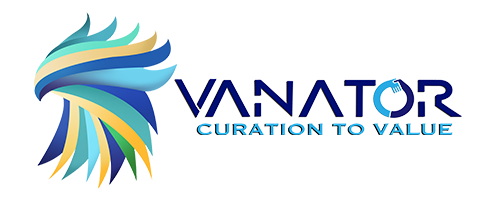Explore Recruitment Hidden facts 2025 in this guide revealing AI bias, passive talent strategies, employer ghosting, and the role of predictive analytics in transforming modern hiring on a global scale.
- Home
- Blogs
- Recruitment Hidden Facts No One Knows About: Untold Industry Secrets Shaping the Future of Hiring in 2025
Recruitment Hidden Facts No One Knows About: Untold Industry Secrets Shaping the Future of Hiring in 2025
Explore Recruitment Hidden facts 2025 in this guide revealing AI bias, passive talent strategies, employer ghosting, and the role of predictive analytics in transforming modern hiring on a global scale.
Key Takeaways:
Hidden Fact #1: The 70% Rule – Passive Candidates Hold 70% of All Talent
Hidden Fact #2: Your Resume Never Reaches a Human – The AI Screening Black Hole
Hidden Fact #3: The 68.5-Day Hiring Cycle is Killing Candidate Quality
Hidden Fact #5: Job Descriptions Have Hidden Agendas You’ll Never Detect
Hidden Fact #6: Employer Ghosting is a Strategic Business Practice, Not a Communication Failure
Hidden Fact #7: Predictive Analytics Can Reduce Turnover by 50% (And Most Companies Ignore It)
Hidden Fact #8: Skills-Based Hiring Contradicts How Most Job Descriptions Are Actually Written
Hidden Fact #11: Remote Work Isn’t About Location Freedom – It’s About Employer’s Risk Reduction
Hidden Fact #12: The AI Arms Race – AI-Optimized Resumes vs. AI Screening Systems
Hidden Fact #13: Diversity and Inclusion Initiatives Often Hide Systemic Discrimination
Hidden Fact #14: Time-to-Hire Isn’t Just a Metric – It’s a Competitive Weapon

Introduction: The Recruitment Industry's Best-Kept Secrets
The recruitment landscape has undergone a seismic transformation over the past few years, yet the majority of job seekers and even many employers remain unaware of the hidden mechanics that drive modern hiring decisions. While AI-powered screening systems, predictive analytics, and data-driven recruitment strategies dominate the industry, the real secrets—the psychological tactics, hidden biases, and strategic maneuvers that top recruiters employ—remain largely obscured from public view.
The global recruitment industry is projected to reach unprecedented heights, with the US staffing market alone valued at $198.17 billion by 2025, representing 30.49% of the entire global recruitment market. Yet behind these impressive numbers lies a complex ecosystem of hidden practices, psychological manipulation, and sophisticated technology that most candidates never see coming.
In 2025, understanding these recruitment hidden facts isn’t just an advantage—it’s essential survival knowledge for both job seekers navigating the hiring gauntlet and employers trying to attract top talent in an increasingly competitive market.
This comprehensive guide reveals the recruitment industry’s most closely guarded secrets, links them with current market trends, and explores how these hidden dynamics are reshaping the future of work.

Hidden Fact #1: The 70% Rule – Passive Candidates Hold 70% of All Talent
What Recruiters Don’t Tell You About Passive Candidates
Here’s a number that should shock every job seeker: approximately 70% of the global talent market consists of passive candidates—people who aren’t actively looking for jobs. Yet most recruitment strategies focus almost exclusively on active job seekers, which means they’re fishing in a pond that contains only 30% of available talent.
This fundamental mismatch reveals a critical hidden fact: the best talent is rarely available through traditional job application channels. Top performers are typically employed, satisfied, and not bothering with online job portals. They’re not updating their resumes or attending job fairs.
The Hidden Recruiter Strategy: Elite recruiters build what’s known as “hidden talent pipelines”—curated networks of passive candidates with whom they maintain ongoing relationships. Companies with strong talent pipelines cut their cost-per-hire by up to 50% and reduce hiring time significantly compared to traditional sourcing methods.
The research is damning: sourced candidates prove more than twice as effective as traditional applicants. Companies hire one in 72 sourced candidates compared to one in 152 outside applicants. This disparity reveals a hidden truth that job boards and traditional recruitment channels don’t want you to know: they’re fundamentally inefficient at connecting with top talent.
The Current Affairs Connection
In 2025, with labor shortages at a 17-year high and remote work eliminating geographic boundaries, the ability to tap into passive talent has become a strategic imperative. Companies that master passive candidate recruitment gain access to a talent pool representing up to 17% of underutilized workers—people who might be open to the right opportunity if approached correctly.
This shift aligns perfectly with the trend toward remote and hybrid hiring models, where 70% of the workforce will be remote at least five days a month by the end of 2025. Passive candidates, already employed and potentially unhappy with their current arrangements, are the most likely to switch for better flexibility and work-life balance.

Hidden Fact #2: Your Resume Never Reaches a Human – The AI Screening Black Hole
The Uncomfortable Truth About AI Screening Systems
Here’s what the recruitment industry doesn’t advertise: 83% of companies will use AI for resume screening by 2025. But here’s the hidden secret that job seekers desperately need to know—most AI screening systems are poorly calibrated, often operate with minimal human oversight, and frequently reject perfectly qualified candidates through no fault of their own.
The data is staggering: when candidates apply through mainstream job boards, they enter what might be called an “AI screening black hole.” Your carefully crafted resume is instantly uploaded into an automated system that scores it on predetermined criteria you likely can’t see. If your score falls below a certain threshold—often arbitrary and misaligned with actual job requirements—you receive an automatic rejection, and no human ever lays eyes on your application.
The Hidden Problem: Twenty-one percent of companies currently allow AI to automatically reject candidates at all stages without human review. This means approximately one in five of your applications could be automatically rejected without anyone ever considering your actual qualifications.
Even more alarming, the training data used to build these AI systems often contains historical bias. If a company’s AI system was trained on successful hires from the past decade, it may have encoded discriminatory patterns, preferring certain demographics, educational backgrounds, or career trajectories while systematically disadvantaging others.
AI Bias: The Hidden Discrimination Layer
Recent research reveals that leading AI models systematically favor female candidates while disadvantaging Black male applicants, even when qualifications are identical. The differences may appear statistically small—0.3 to 0.5 points on a 100-point scale—but they translate into meaningful employment discrimination at decision thresholds.
The intersectionality problem compounds this issue: Black women face different algorithmic discrimination than Black men or white women. These biases aren’t uniform; they’re complex and multidimensional, yet most companies using AI screening systems remain unaware of these patterns because they never conduct impact assessments before deploying the technology.
The Current Affairs Connection
In 2025, as regulatory scrutiny increases and diversity remains a stated priority for 85% of talent acquisition leaders, the hidden bias embedded in AI screening systems represents a ticking time bomb for employers and a hidden obstacle for candidates. Companies that implement bias-detection protocols and maintain human oversight are gaining competitive advantages, while those relying on fully automated screening are inadvertently creating discriminatory hiring practices they’re not equipped to defend.

Hidden Fact #3: The 68.5-Day Hiring Cycle is Killing Candidate Quality
Why Extended Timelines Are an Industry Secret Nobody Discusses
The average time to hire has reached 68.5 days in 2025, up dramatically from 44 days in 2023. This increase isn’t accidental—it’s a symptom of systemic problems within modern recruitment that the industry prefers to keep quiet.
Here’s the hidden fact: 60% of job seekers abandon applications due to lengthy forms, poor mobile experiences, and lack of communication during the hiring journey. But recruiters don’t publicize this statistic because it exposes their broken processes.
The Hidden Timeline Breakdown:
- Average application completion: 3-5 days
- Initial AI screening: 1-7 days
- Recruiter review: 5-14 days
- Interview scheduling: 7-14 days
- Interview process: 15-23 days
- Decision-making and feedback: 14-30 days
- Offer negotiation: 7-14 days
- Background checks and onboarding: 14-21 days
The Candidate Experience Reality: Compounding matters, top candidates tend to vanish fast—many are off the market in just 10 days. While you’re still conducting preliminary interviews, top talent has already accepted offers elsewhere. This creates a hidden performance gap: companies experience extended hiring cycles precisely when hiring the best candidates requires speed.
Decision-Making Paralysis: The Hidden Epidemic
A shocking statistic that the recruitment industry rarely highlights: 81% of hiring managers experience decision-making paralysis, leading them to ghost candidates because they’re “still deciding on the right candidate.” They’re waiting for perfect candidates who don’t exist rather than moving forward with excellent ones.
This indecision cascades through the hiring funnel. Extended timelines devastate candidate experience—26% of job seekers reject offers due to poor communication or unclear expectations during lengthy processes. These aren’t marginal candidates; they’re qualified professionals who lost patience with companies that couldn’t make decisions.
The Multi-Stage Interview Trap
Modern recruitment has introduced an insidious hidden trend: the proliferation of multi-stage interview processes. Candidates now report five to eight interview rounds versus the traditional two to three. Each additional round adds days or weeks to the timeline as schedules align and feedback consolidates.
This isn’t necessary. It’s a symptom of organizational dysfunction disguised as “rigorous evaluation.” Companies rationalize multiple interview stages as thoroughness, but the hidden reality is that they’re trying to reduce hiring risk at the cost of candidate experience and hiring speed.
The Current Affairs Connection
In 2025, with labor shortages creating urgent pressure on talent acquisition teams and top candidates receiving multiple offers simultaneously, speed has become a hidden competitive advantage. Companies that streamline their hiring processes from 68.5 days to 20-25 days gain measurable advantages: they hire better candidates because they’re moving while top talent is still available.
Forward-thinking organizations are implementing structured interviews, AI-assisted scheduling, and asynchronous assessments to accelerate their timelines. Those clinging to multi-stage traditional processes are watching top talent slip away to competitors.

Hidden Fact #4: Social Media Stalking is Standard Recruiting Practice (And What They're Actually Looking For)
The Hidden Social Media Screening Process
Here’s a hidden fact that should concern every job seeker: recruiters systematically investigate your social media profiles as part of their evaluation process, but they’re looking for specific signals that go far beyond what you might imagine.
Nearly 40% of companies keep their C-suite recruitment secret, which means high-level hiring operates under different rules—often including deeper social media investigation. But even for standard positions, social media investigation is ubiquitous.
What Recruiters Are Actually Checking:
- Professional Presence Quality: A strong LinkedIn profile can significantly impact your candidacy. Recruiters assess the professionalism of your online presence, the consistency of your personal brand across platforms, and the depth of your professional history.
- Industry Engagement Patterns: Recruiters want to see evidence that you’re genuinely interested in your field. They look for your engagement with industry content, your comments on professional discussions, your participation in thought leadership conversations, and your demonstrated commitment to continuous learning.
- Red Flags and Personality Indicators: Recruiters use social media to assess personality fit, cultural alignment, and communication style. They’re looking for indicators of professionalism, maturity, and how you handle disagreement or criticism.
- Network Quality: They assess your professional network, the caliber of people you’re connected with, and whether your connections align with industry leaders or established professionals.
- Content Creation and Thought Leadership: Those creating original content—whether blog posts, LinkedIn articles, or industry commentary—stand out as more engaged and knowledgeable than passive observers.
The Hidden Advantage: Building Authentic Online Presence
The hidden secret that top candidates understand: building an authentic, professional online presence creates a hidden pipeline of opportunities. Recruiters actively seek out candidates who demonstrate expertise through their online activities.
Video content performs exceptionally well—recruiters remember 95% of video messages compared to just 10% from text. Behind-the-scenes glimpses, day-in-the-life stories, and professional development content create lasting impressions that static profiles cannot achieve.
The Current Affairs Connection
In 2025, with Gen Z entering the workforce and social recruiting becoming increasingly critical, the hidden reality is that your online presence functions as a permanent resume available to any recruiter at any time. Companies now build employer brands through authentic storytelling, employee voices, and immersive social experiences rather than traditional corporate communications.
LinkedIn, Instagram, and increasingly even TikTok have become legitimate recruitment channels. Organizations leveraging social recruiting effectively are accessing passive candidates through targeted content and authentic employer brand storytelling. Those ignoring social recruiting are missing up to 60% of applications from candidates seeking remote and hybrid roles.

Hidden Fact #5: Job Descriptions Have Hidden Agendas You'll Never Detect
The Secret Language of Job Descriptions
Here’s an uncomfortable hidden fact that HR professionals don’t publicize: most job descriptions contain intentional obfuscations, hidden requirements, and strategic vagueness designed to influence the hiring outcome before candidates even apply.
The Hidden Patterns in Job Descriptions:
- The Must-Have vs. Nice-to-Have Deception: Requirements are intentionally ambiguous about which skills are truly essential versus aspirational. Many candidates self-select out based on misinterpreted requirements, reducing competition from candidates who could actually succeed in the role.
- Salary Range Exclusions: Many job descriptions intentionally omit salary information, preserving management’s ability to offer less to candidates with lower salary expectations while offering more to candidates with strong negotiating positions.
- Experience Inflation: Job descriptions often inflate required experience levels. A role truly requiring 3 years of experience might list “5+ years required” specifically to narrow the candidate pool and justify paying lower salaries (they’re paying for “required” experience).
- Education Red Herrings: Educational requirements sometimes serve as hidden filters unrelated to actual job success. These often function as socioeconomic screening mechanisms rather than genuine competency requirements.
- Diversity Red Flags: Certain language patterns correlate with more or less diverse candidate pools. Masculine-coded language (“aggressive,” “competitive,” “dominant”) attracts different demographics than gender-neutral language (“collaborative,” “inclusive,” “supportive”).
The SEO-Optimized Job Description Secret
A hidden trend among sophisticated recruiters: job descriptions are increasingly optimized for search engines using keywords that candidates are likely to search for, even if those keywords don’t perfectly reflect the actual role.
This creates a hidden mismatch between job description keywords and actual job requirements. A role optimized for “remote software developer jobs near me” might appear in local searches even though the position is fully remote and location is irrelevant. Candidates attracted by these optimized keywords may discover misleading descriptions once they investigate further.
The Current Affairs Connection
In 2025, skills-based hiring has become the dominant trend, with 81% of companies shifting focus from credential-based qualifications to practical abilities. This shift directly contradicts the hidden reality: many job descriptions still use traditional language reflecting outdated credential requirements.
Forward-thinking companies are redesigning job descriptions to focus on specific competencies, learning agility, and demonstrated skills rather than years of experience or specific degrees. These organizations are accessing broader talent pools and hiring candidates with non-linear career paths—people overlooked by credential-obsessed competitors.

Hidden Fact #6: Employer Ghosting is a Strategic Business Practice, Not a Communication Failure
Why Companies Ghost Candidates Systematically
Here’s a hidden fact that exposes organizational dysfunction: 61% of job seekers experience ghosting after interviews. But this isn’t due to incompetence—it’s often a strategic business practice rooted in organizational structure and decision-making processes.
The Hidden Reasons Behind Employer Ghosting:
- Decision-Making Paralysis: As noted earlier, 81% of hiring managers ghost because they’re “still deciding.” This represents a failure of organizational decision-making authority, not communication failure. Hiring managers lack clear authority to make decisions, so they stall indefinitely while seeking consensus or higher-level approval.
- Process Bottlenecks: Many organizations lack integrated communication systems. Recruiters must manually update every candidate at every stage through multiple platforms. When tracking happens across disparate systems, candidates systematically fall through cracks.
- Overwhelm by Volume: AI-driven applications flood recruiters with resumes. One posting attracts 500+ applications, yet recruiters lack systems or time to maintain communication with all candidates. Recruiter workload rose 26% in Q4 2024, directly reducing candidate communication bandwidth.
- Budget Freezes and Position Eliminations: Positions get cancelled mid-process, but companies don’t want to admit uncertainty by informing candidates. Postings remain active weeks after budget cuts, systematically collecting applications for positions that no longer exist.
- Internal Hiring Surprises: Organizations decide to promote internally but haven’t updated external applicants. These candidates remain hopeful, never learning positions weren’t truly available to outsiders.
- Deliberate Ghosting as Risk Reduction: Some organizations deliberately ghost candidates they might want in future searches, maintaining a “pool” of interested candidates without commitment. It’s a low-key talent pipeline strategy that exploits candidate goodwill.
The Hidden Hypocrisy
Here’s the hidden reality that exposes the dysfunction: companies expect professionalism, punctuality, and immediate responses from candidates, then systematically ghost those same candidates without explanation. This one-sided expectation permeates modern hiring.
The Current Affairs Connection
In 2025, with candidate experience becoming a recognized competitive advantage and employer reputation increasingly important to recruitment success, ghosting represents hidden organizational dysfunction that top candidates penalize. Companies with strong employer brands and transparent hiring processes report better quality hires and lower cost-per-acquisition.
Organizations that systematize candidate communication, establish clear decision-making timelines, and maintain transparency throughout the hiring process are gaining measurable advantages. They attract candidates who’ve grown frustrated with ghosting, creating a hidden competitive advantage through basic communication professionalism.

Hidden Fact #7: Predictive Analytics Can Reduce Turnover by 50% (And Most Companies Ignore It)
The Hidden Data Revolution Reshaping Recruitment
Here’s a remarkable hidden fact that few organizations leverage: predictive analytics in recruiting could reduce turnover by 50%, yet most companies continue making hiring decisions based on intuition and interview impressions.
Organizations using predictive hiring analytics see measurably superior results:
- 24% better quality of hire
- 70% faster time-to-fill compared to traditional methods
- 46% faster hiring cycles when using AI-powered assessments
- 50% reduction in turnover when predictive analytics inform hiring decisions
The Hidden Process Behind Predictive Hiring
Predictive hiring analyzes vast amounts of employee data to identify patterns correlating with high performance. When you examine hundreds or thousands of employees across similar positions, certain commonalities emerge among top performers—specific skill combinations, career progression patterns, behavioral indicators, and educational backgrounds.
Think of it as pattern recognition on a massive scale. Modern predictive systems analyze:
- Career trajectory indicators
- Skill combinations that predict success
- Performance patterns in similar roles
- Behavioral assessments revealing work style compatibility
- Educational backgrounds and learning patterns
- Engagement patterns with company culture
The Hidden Gap: Why Most Companies Don’t Implement Predictive Hiring
Despite clear evidence of effectiveness, most organizations remain unaware of or fail to implement predictive hiring because:
- Implementation Complexity: Setting up predictive systems requires technical infrastructure, data governance, and statistical expertise most HR departments lack.
- Privacy Concerns: Predictive hiring involves collecting and analyzing significant amounts of personal information, raising legitimate concerns about data privacy and candidate consent.
- Hidden Bias Replication: If historical data contains discrimination patterns, predictive systems replicate those patterns at scale. Companies fear deploying systems that perpetuate historical bias.
- Change Resistance: Traditional hiring managers resist data-driven approaches that challenge their intuition-based decision-making authority.
The Current Affairs Connection
In 2025, with 85% of HR professionals believing data analytics will be critical in recruitment strategies, the hidden reality is that data-driven recruiting has moved from optional to essential. Companies that implement predictive hiring with proper bias-detection protocols gain significant competitive advantages through better hiring decisions and reduced turnover.
The demand for talent acquisition specialists has increased by 87% in the last year specifically because hiring has become more complex, requiring specialized skills in data analytics, AI tool management, and evidence-based decision-making.

Hidden Fact #8: Skills-Based Hiring Contradicts How Most Job Descriptions Are Actually Written
The Hidden Contradiction Between Stated Strategy and Reality
Here’s a paradoxical hidden fact that exposes organizational dysfunction: 81% of companies claim to prioritize skills-based hiring, yet the vast majority of job descriptions still emphasize years of experience, specific degrees, and credential-based qualifications.
Skills-based hiring represents a fundamental shift from credential-obsessed recruitment toward competency-focused assessment. The theory is excellent: focus on what candidates can actually do rather than credentials suggesting they might be able to do it. This approach would unlock access to non-traditional talent—career switchers, freelancers, people with non-linear paths, and self-taught professionals.
The Hidden Implementation Gap
The hidden reality: most organizations claiming to implement skills-based hiring haven’t actually transformed their processes. They’ve simply added skills assessment language to traditional job descriptions while maintaining credential requirements that contradict skills-first principles.
True skills-based hiring requires:
- Removing experience requirements or significantly reducing them
- Focusing job descriptions on specific competencies rather than credentials
- Implementing skills assessments rather than relying on resume signals
- Evaluating transferable skills from non-traditional backgrounds
- Valuing demonstrated ability over educational pedigree
Yet most organizations implementing only token elements of this framework continue missing diverse talent pools due to hidden credential requirements and traditional evaluation criteria.
The Hidden Advantage: Who Actually Benefits
Companies that genuinely implement skills-based hiring are discovering a hidden advantage: they’re accessing talent pools ignored by credential-obsessed competitors. In competitive markets where specialized talent is scarce, the ability to hire skilled career-switchers and non-traditional candidates creates significant competitive advantages.
The hidden challenge: bias doesn’t disappear just because you claim to use skills-based hiring. Research shows that AI systems trained to identify “skills” often encode hidden biases, disadvantaging non-traditional backgrounds even when skills are genuinely equivalent.
The Current Affairs Connection
In 2025, skills-based hiring remains a stated priority, yet the hidden reality is that most organizations are still early in implementation. Those genuinely committed to skills-based hiring—removing credential requirements, implementing rigorous skills assessments, and valuing diverse backgrounds—are positioning themselves to access broader talent pools as labor competition intensifies.

Hidden Fact #9: Recruitment Process Outsourcing (RPO) is Growing 18.5% Annually Because Internal Teams Are Broken
The Hidden Crisis Behind RPO Growth
Here’s an uncomfortable hidden fact that the recruitment industry prefers to hide: Recruitment Process Outsourcing (RPO) is expected to grow by 18.5% annually specifically because internal HR and recruitment teams are fundamentally broken at hiring effectively.
Organizations outsource recruitment when internal processes fail. They hand hiring responsibilities to external specialists because their internal structures, timelines, and decision-making processes are dysfunctional.
The Hidden Statistics Revealing Internal Recruitment Failure:
- Average time to hire: 68.5 days (up from 44 days in 2023)
- 60% of candidates abandon applications mid-process
- 61% of job seekers experience ghosting
- 83% of companies implement AI screening (often poorly calibrated)
- 81% of hiring managers experience decision-making paralysis
These metrics don’t reflect best practices; they reflect systemic failure. RPO growth reflects organizations admitting their internal hiring is broken.
The Hidden Benefits of RPO
Organizations implementing RPO report:
- Reduced cost-per-hire through economies of scale
- Faster hiring cycles through dedicated expertise
- Improved candidate experience through professional communication
- Better quality-of-hire through specialized sourcing and assessment
- Reduced recruiter workload on internal teams (which increased 26% in Q4 2024)
The Current Affairs Connection
In 2025, as the war for talent intensifies and hiring cycles extend due to process failures, RPO represents a hidden trend toward outsourcing recruitment functions that internal teams can’t manage effectively.
For high-volume roles and specialized hiring, RPO offers significant competitive advantages. For strategic, mission-critical hiring, outsourcing can represent an abdication of responsibility. The hidden insight: organizations are increasingly categorizing their hiring into strategic versus transactional, outsourcing the latter while maintaining control over the former.

Hidden Fact #10: Employer Branding Directly Impacts Hiring Costs and Candidate Quality (But Most Companies Ignore It)
The Hidden Multiplier: Employer Brand and Hiring Efficiency
Here’s a hidden fact that suggests most organizations are leaving massive value on the table: companies with strong employer brands cut their hiring costs by 43% compared to competitors with weak employer branding.
Additionally, 88% of candidates say employer branding influences their decision to apply, and 75% of job seekers say the hiring process itself affects their decision to accept offers. Yet most organizations invest minimal resources in employer brand development compared to the ROI it delivers.
The Hidden Employer Branding Advantage
Strong employer branding delivers measurable hidden advantages:
- Reduced Cost-Per-Hire: By 43%, according to research data. This single metric justifies significant employer branding investment.
- Improved Candidate Quality: Strong employer brands attract higher-quality applicants because top talent targets companies with good reputations.
- Faster Time-to-Fill: Companies with strong employer brands see faster hiring because more qualified candidates apply proactively.
- Reduced Recruitment Volume Required: Instead of posting jobs to attract sufficient applicants, strong employer brands see organic interest from passive candidates and former employees.
- Employee Ambassador Effects: Companies with strong employer brands develop employee ambassadors who promote the organization through genuine word-of-mouth and social media, amplifying recruitment reach.
The Current Affairs Connection
In 2025, with Gen Z increasingly valuing employer reputation and transparency, employer branding has shifted from nice-to-have to essential recruitment infrastructure. Companies leveraging social media, employee stories, transparent communication about company culture, and authentic storytelling are building employer brands that attract talent.
The hidden trend: as traditional recruitment advertising becomes increasingly expensive and less effective, organic employer branding through authentic employee advocacy is emerging as the most cost-effective recruitment channel.

Hidden Fact #11: Remote Work Isn't About Location Freedom – It's About Employer's Risk Reduction
The Hidden Truth Behind Remote Work Expansion
Here’s a cynical but revealing hidden fact about remote work: while marketed as candidate flexibility, remote work expansion often reflects employers’ hidden agenda to reduce overhead costs, expand geographic sourcing reach, and shift liability for workspace.
The Hidden Benefits Organizations Get From Remote Work:
- Real Estate Cost Reduction: Eliminating office space represents massive cost savings.
- Geographic Talent Sourcing: Remote work allows hiring from broader geographic areas, reducing competition for local talent and potentially accessing lower-cost labor markets.
- Liability Shifting: Remote work shifts workplace safety and ergonomic liability to employees’ home environments.
- Operational Flexibility: Companies maintain flexibility to contract or expand without facility constraints.
- Workforce Segmentation: Remote work enables companies to segment workforces—keeping core talent in offices while treating remote workers as more expendable.
The Hidden Candidate Reality
While marketed as flexibility, remote work often comes with hidden expectations:
- Constant connectivity and asynchronous availability
- Video-on meetings and surveillance (many companies use monitoring software)
- Blurred work-life boundaries (home becomes perpetual office)
- Reduced career visibility (remote workers often experience slower promotions)
- Isolation and disconnection from organizational culture
Yet remote work remains in high demand: 70% of the workforce will be remote at least five days a month by end of 2025, and remote/hybrid roles attract 60% of applications despite comprising only 20% of job postings.
The Current Affairs Connection
In 2025, the hidden reality behind remote work expansion is becoming increasingly visible. Companies use remote work to access broader talent pools while controlling costs. Top candidates increasingly demand remote flexibility not just for convenience but as a response to organizational dysfunction and unnecessary commute burden.
The hidden opportunity: organizations maintaining core offices while expanding remote hiring access are capturing candidates displaced by companies operating fully remote or hybrid models while maintaining some oversight benefits of office presence for critical decisions.

Hidden Fact #12: The AI Arms Race – AI-Optimized Resumes vs. AI Screening Systems
The Hidden Escalation of Automated Dysfunction
Here’s a peculiar hidden fact that reveals modern recruitment’s dysfunction: an arms race has emerged where AI-optimized resumes compete against AI screening systems in a machine-to-machine battle that bypasses human judgment entirely.
The Hidden Escalation:
- Candidate-Side Optimization: Job seekers use AI tools like ChatGPT to write and optimize resumes specifically for AI screening systems. They’re learning to speak the language of algorithms.
- Keywords and Formatting: Candidates optimize for keyword density, specific formatting patterns, and algorithmic preferences they’ve discovered through trial and error.
- System-Side Gaming: Some candidates use AI-generated content that perfectly mirrors what AI screening systems identify as high-scoring language, creating resumes optimized for machines rather than humans.
- The Irony: The intended purpose of AI screening—to identify top candidates more efficiently than humans—is being undermined by candidates learning to game the systems. AI meets AI in a blind dance where human judgment is entirely absent.
The Hidden Consequence
The hidden consequence of this arms race: qualified candidates without AI optimization skills get systematically disadvantaged, while candidates skilled at gaming AI systems advance. This creates a hidden filter favoring technological sophistication over actual job competency.
The system degrades further as more candidates optimize: AI systems must constantly recalibrate to distinguish optimized resumes from genuinely qualified candidates, creating a perpetual arms race where the target keeps moving.
The Current Affairs Connection
In 2025, with 54.5% of SEO professionals incorporating ChatGPT into daily work (up from 29.5% in 2023), and similar trends across industries, the hidden reality is that AI tool adoption has created sophisticated arms races across knowledge work. Recruitment is simply one visible example.
The hidden insight: candidates who understand AI system logic and optimize accordingly are gaining unfair advantages. But this advantage is temporary—as more candidates optimize, the signal-to-noise ratio degrades and systems become less effective, ultimately hurting both candidates and employers.

Hidden Fact #13: Diversity and Inclusion Initiatives Often Hide Systemic Discrimination
The Hidden Contradiction: Stated DEI vs. Systemic Reality
Here’s an uncomfortable hidden fact that most organizations aggressively avoid discussing: 85% of companies claim diversity and inclusion are strategic priorities, yet hidden discrimination persists throughout their recruitment systems.
The Hidden DEI Contradiction:
- Stated Commitment vs. Actual Practice: Companies publish diversity commitments while maintaining credential-based hiring that systematically disadvantages underrepresented groups.
- Hidden Biases in Blind Hiring: Even “blind hiring” designed to remove identifiable information creates new biases as evaluators unconsciously assume characteristics based on hidden signals (school names, community involvement, etc.).
- Hidden Gatekeeping: Credential requirements, educational preferences, and experience requirements often function as hidden gatekeeping mechanisms that disadvantage candidates from underrepresented backgrounds.
- Diversity Theater: Some organizations implement superficial diversity initiatives (diverse interview panels, unconscious bias training) while maintaining underlying systemic barriers.
The Hidden Benefits of Genuine Diversity Implementation
Organizations genuinely committed to diversity and following through with systemic changes report:
- Improved innovation and problem-solving
- Better business outcomes and financial performance
- Stronger employer brands attracting diverse talent
- Reduced turnover among underrepresented employees
- Access to talent pools overlooked by credential-obsessed competitors
The Current Affairs Connection
In 2025, diversity remains a stated priority for 85% of talent acquisition leaders. The hidden trend is differentiation: companies genuinely implementing systemic diversity changes (removing unnecessary credentials, implementing bias-detection in AI systems, truly inclusive hiring practices) are gaining competitive advantages over companies practicing diversity theater.
The hidden challenge: genuine diversity implementation requires admitting historical systemic failures and committing to significant process changes. Most organizations find this level of honesty and change difficult, instead preferring surface-level initiatives that signal commitment without requiring fundamental transformation.

Hidden Fact #14: Time-to-Hire Isn't Just a Metric – It's a Competitive Weapon
The Hidden Truth About Hiring Speed
Here’s a hidden competitive insight: time-to-hire has become a hidden competitive weapon. Organizations that reduce hiring cycles from 68.5 days to 20-25 days gain enormous advantages because they’re hiring while top candidates are still available.
The Hidden Timeline Advantage:
- Day 1-10: Top candidates are still in job search mode, potentially comparing offers
- Day 10-20: Top candidates increasingly have other offers
- Day 20-30: Top candidates are accepting offers, entering negotiation, or moving to next opportunity
- Day 30-68.5: Organizations at this timeline are hiring from increasingly thin talent pools, often settling for lower-quality candidates
Companies that streamline processes to 20-25 days systematically hire better candidates because they’re competing for talent while top performers are still considering opportunities.
The Hidden Process Improvements
Organizations achieving 20-25 day hiring cycles implement:
- Structured interviews with standardized questions and scoring
- AI-assisted scheduling and interview coordination
- Asynchronous assessments reducing schedule conflicts
- Clear decision-making authority and timelines
- Streamlined background checks (or conducting in parallel)
- Rapid offer generation and negotiation
- Elimination of unnecessary interview stages
The Current Affairs Connection
In 2025, with labor shortages creating intense competition for top talent and top candidates receiving multiple offers simultaneously, hiring speed has become a hidden but measurable competitive advantage. Organizations that recognize this and invest in process streamlining are gaining systematic advantages in quality-of-hire and candidate caliber.

Hidden Fact #15: The Future of Recruitment – AI Integration, Data-Driven Decisions, and Ethical Oversight
The Hidden Evolution Unfolding in 2025
As we move through 2025, recruitment is experiencing hidden transformations that will reshape hiring for years to come:
1.AI Integration Beyond Screening: While 83% of companies currently use AI for resume screening, the hidden trend is AI expanding far beyond initial screening into:
- Predictive performance analysis
- Culture fit assessment
- Interview question generation and evaluation
- Offer optimization and negotiation
- Onboarding personalization
The hidden challenge: most organizations lack ethical oversight frameworks for these expanded applications, creating risks of systematic discrimination at every stage.
2. Data-Driven Hiring Becoming Table Stakes
The hidden reality: 85% of HR professionals believe data analytics will be critical in recruitment strategies going forward. This represents a fundamental shift from intuition-based to evidence-based hiring.
Organizations that build data infrastructure now are positioning themselves for recruitment excellence. Those continuing with intuition-based approaches will find themselves increasingly disadvantaged.
3. Regulatory Scrutiny and Compliance Requirements
A hidden but emerging trend: governments globally are increasing regulatory scrutiny of algorithmic hiring. The EU’s AI Act, US state laws examining hiring algorithms, and legal challenges are creating new compliance requirements.
Organizations building ethical oversight, bias-detection protocols, and transparency mechanisms now are preparing for an environment where regulatory requirements will be mandatory.
The Hidden Competitive Framework for 2025 and Beyond
Organizations winning the war for talent in 2025 and beyond will likely:
- Build transparent hiring processes that communicate timelines, decision criteria, and feedback
- Streamline hiring cycles from 68 days to 20-25 days through process optimization
- Implement skills-based hiring genuinely, not tokenistically, removing unnecessary credential barriers
- Maintain human oversight of AI systems while leveraging their analytical power
- Build employer brands that attract talent through authentic storytelling and employee advocacy
- Access passive talent through relationships and targeted engagement rather than relying on job postings
- Implement predictive analytics with proper bias-detection to improve hiring quality and reduce turnover
- Commit to genuine diversity beyond surface-level initiatives
- Establish ethical frameworks for algorithmic decision-making before they become regulatory mandates

Conclusion: From Hidden Secrets to Competitive Advantage
The recruitment industry’s best-kept secrets reveal a landscape far more complex, strategically sophisticated, and ethically fraught than popular narratives suggest. From the hidden 70% of passive talent remaining untapped to the hidden discrimination embedded in AI screening systems, from ghosting as systematic organizational dysfunction to hidden employer branding advantages, these revealed secrets reshape how we should think about modern hiring.
For job seekers, understanding these hidden facts transforms them from victims of opaque processes to strategic players who can navigate hiring with awareness of hidden dynamics, potential biases, and optimization strategies.
For employers, these hidden facts reveal massive opportunities: organizations that streamline processes, genuinely implement skills-based hiring, access passive talent, build strong employer brands, and maintain human oversight of AI systems are systematically outperforming competitors still using outdated approaches.
The fundamental hidden truth underlying all these secrets: recruitment hasn’t caught up to the complexity of modern work. Organizations and candidates that understand this and adapt strategically will thrive. Those clinging to outdated intuition-based approaches or blindly trusting flawed AI systems will find themselves increasingly disadvantaged in the competitive war for talent.
The recruitment revolution is here. The question isn’t whether these hidden facts will reshape hiring—they already are. The question is whether you’ll understand and leverage them for competitive advantage.
Frequently Asked Questions (FAQs)
Build a strong professional brand through LinkedIn optimization, active participation in industry discussions, content creation, and strategic networking. Position yourself as someone worth recruiting rather than relying on active job applications.
Conduct impact assessments before deployment, maintain human oversight especially for disadvantaged groups, regularly audit for bias patterns, and implement debiasing procedures that account for intersectional effects.
Focus on concrete skills and achievements rather than generic language. Use keywords related to your target role, but write authentically for human readers first. Build a strong LinkedIn profile that reinforces and expands on resume information.
Modern best practices suggest 20-25 days for standard roles. Extended processes beyond this risk losing top candidates while not meaningfully improving hiring quality.
Absolutely. Companies with strong employer brands reduce cost-per-hire by 43% and hire better quality candidates. The ROI typically justifies significant investment.
Credentials focus on what candidates previously obtained (degrees, certifications). Skills focus on what candidates can actually do. Skills-based hiring opens access to non-traditional talent but requires rigorous assessment methods.
Streamline interview processes, implement structured interviews, use AI-assisted scheduling, eliminate unnecessary interview stages, clarify decision-making authority, and establish clear timelines.
Key Statistics Summary
- 70%: Percentage of talent market consisting of passive candidates
- 83%: Percentage of companies using AI for resume screening by 2025
- 1 in 72 vs. 1 in 152: Sourced candidate success rate vs. traditional applicant success rate
- 68.5 days: Average time to hire in 2025
- 60%: Percentage of candidates abandoning applications mid-process
- 61%: Percentage of job seekers experiencing ghosting
- 81%: Percentage of hiring managers experiencing decision-making paralysis
- 81%: Percentage of companies claiming skills-based hiring as priority
- 85%: Percentage of companies with diversity as strategic priority
- 88%: Percentage of candidates influenced by employer branding
- 43%: Cost reduction from strong employer branding
- 24%: Better quality of hire with predictive analytics
- 70%: Faster time-to-fill with predictive analytics
- 50%: Potential turnover reduction with predictive analytics
- 18.5%: Annual growth rate of RPO industry
- 95%: Memory retention of video content vs. 10% for text
- 46%: Faster hiring cycles with AI-powered assessments
- 87%: Increase in demand for talent acquisition specialists
- $198.17 billion: US staffing market value by 2025
-
 AI-Driven SEO Tools and Services:Boosting Rankings with AI
AI-Driven SEO Tools and Services:Boosting Rankings with AI -
 Best Manufacturing Employment Agencies In USA
Best Manufacturing Employment Agencies In USA -
 Best Technical Search Engine Optimization Agencies in USA
Best Technical Search Engine Optimization Agencies in USA -
 Best Email Marketing Services in USA 2025
Best Email Marketing Services in USA 2025 -
 Best AI-Driven Digital Marketing in USA 2025
Best AI-Driven Digital Marketing in USA 2025 -
 Best Social Media Marketing Services in New York 2025
Best Social Media Marketing Services in New York 2025 -
 Best Digital Marketing Services in New York 2025
Best Digital Marketing Services in New York 2025 -
 Best Digital Marketing Services in Boston 2025
Best Digital Marketing Services in Boston 2025 -
 Best SEO Services in Boston 2025
Best SEO Services in Boston 2025 -
 Best Social Media Marketing Services in UAE
Best Social Media Marketing Services in UAE -
 Best Website Development Services in Dubai
Best Website Development Services in Dubai -
 Best Performance Marketing Services in Dubai
Best Performance Marketing Services in Dubai -
 Best SEO Services in Dubai
Best SEO Services in Dubai -
 Best Social Media Marketing Services in Dubai
Best Social Media Marketing Services in Dubai -
 Best Digital Marketing Services in Dubai
Best Digital Marketing Services in Dubai -
 Best Performance Marketing Services in Australia
Best Performance Marketing Services in Australia -
 Best Content Writing Services in Thailand
Best Content Writing Services in Thailand -
 Best Performance Marketing Services in Thailand
Best Performance Marketing Services in Thailand -
 Best SEO services in Thailand
Best SEO services in Thailand -
 Best Mobile App Development Services in Thailand
Best Mobile App Development Services in Thailand -
 Best Website Development Services in Thailand
Best Website Development Services in Thailand -
 Best Social Media Marketing Services in Thailand
Best Social Media Marketing Services in Thailand -
 Best Digital Marketing Services In Thailand
Best Digital Marketing Services In Thailand -
 Best Social Media Strategies in 2025 for Business Growth
Best Social Media Strategies in 2025 for Business Growth -
 Best Mobile App Development Services In Australia
Best Mobile App Development Services In Australia -
 Best Google Ads Services in Australia
Best Google Ads Services in Australia -
 Best SEO (Search Engine Optimization) services in Australia 2025
Best SEO (Search Engine Optimization) services in Australia 2025 -
 Best Email Marketing Services in Australia
Best Email Marketing Services in Australia -
 Best Graphic Design Services in Australia
Best Graphic Design Services in Australia -
 Top Content Writing Services in Australia
Top Content Writing Services in Australia -
 Top Social Media Marketing Services in Australia
Top Social Media Marketing Services in Australia -
 Best Digital Marketing Services in Australia
Best Digital Marketing Services in Australia -
 Best Website Development Services in Australia
Best Website Development Services in Australia
Also Read
Book a Free Consultation
Ready to elevate your customer experience? Don’t settle for ordinary support. Our dedicated consultants are standing by to match your enterprise with the highest-caliber customer service executives in the USA. From virtual assistants to specialized account managers, we have the expertise and talent pool to meet your needs.
Contact our team today to discuss how our tailored customer executive services can transform your support operations. Let us help you hire or outsource the best customer service executives in USA, so you can focus on growing your business with confidence. Together, we will build a world-class customer support team that drives loyalty and success.

